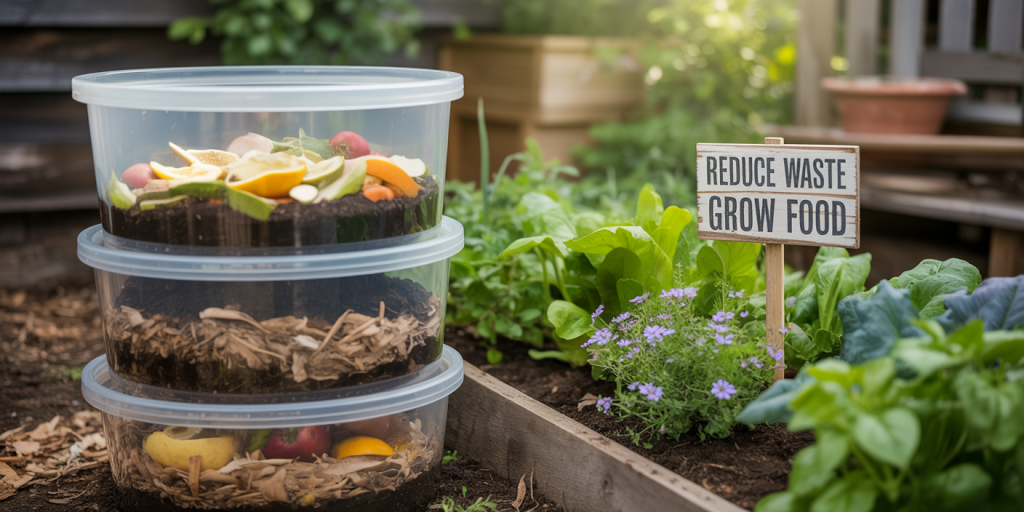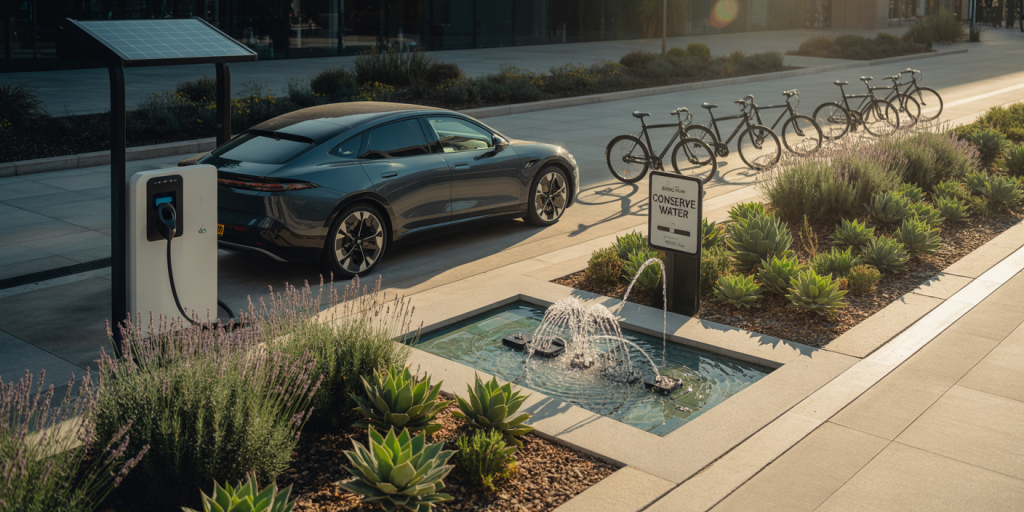In an era of escalating environmental challenges and rising living costs, adopting eco-friendly habits offers a dual benefit: preserving the planet’s delicate ecosystems while significantly reducing household expenses. This synergy between sustainability and savings is not hypothetical—numerous consumers and businesses have already begun to reap extensive financial rewards by integrating green strategies into their daily routines. From energy efficiency to waste reduction, these behaviors empower individuals to make a positive environmental impact without compromising their budgets.
As awareness grows, more studies show that environmentally responsible choices do not necessarily demand higher spending. On the contrary, in many cases, green habits promote cost savings through reduced resource consumption, lower utility bills, and minimized waste disposal fees. This article explores five practical eco-friendly habits that demonstrate how saving money and saving the planet can, and should, go hand in hand.
1. Energy Efficiency: Cutting Bills and Carbon Emissions
One of the most straightforward eco-friendly habits that yield immediate monetary savings is enhancing energy efficiency at home and work. According to the U.S. Department of Energy, households can reduce their energy bills by up to 25% through simple improvements such as sealing leaks, upgrading insulation, and switching to energy-efficient appliances.
For example, replacing traditional incandescent bulbs with LED lighting reduces electricity consumption by about 75%. A household using ten 60-watt incandescent bulbs for an average of 5 hours daily might spend approximately $80 annually on lighting alone. Switching to LEDs can drop that figure to roughly $20, saving around $60 every year with minimal investment (Energy.gov). Energy-efficient appliances such as refrigerators, washing machines, and HVAC systems also contribute to lowering electricity costs, with the benefit of reducing carbon dioxide emissions significantly.
Energy efficiency extends beyond appliances. Behavioral changes like turning off lights when not in use, using smart thermostats, and utilizing natural daylight can further decrease electricity consumption. The National Renewable Energy Laboratory reports that smart thermostats alone can save the average American household up to $180 annually on heating and cooling expenses.
Case Study: An Australian home retrofit project conducted by the Green Building Council revealed a 40% energy cost reduction after installing energy-efficient windows, LED lighting, and smart home devices. This retrofit paid for itself within five years and slashed the household’s carbon footprint by 30%.

| Energy Efficient Habit | Average Annual Savings (USD) | Environmental Impact |
|---|---|---|
| LED Lighting Replacement | $60 | 75% reduction in lighting electricity usage |
| Smart Thermostats | $180 | Lower CO2 emissions by optimizing HVAC use |
| Appliance Upgrades (Energy Star-rated) | $100-$250 | Significant reduction in household energy use |
2. Waste Reduction: Minimizing Trash, Maximizing Savings
Waste generation is not only detrimental to the environment but also costly for households and municipalities. The average American produces approximately 4.9 pounds of waste daily, much of which could be avoided through mindful consumption and waste management practices (EPA, 2023). Embracing waste reduction actively decreases the volume of trash needing disposal, which often translates to reduced garbage collection fees and less spending on unnecessary items.
Reducing waste begins with conscious purchasing decisions. Buying products with minimal or recyclable packaging, using refillable containers, and choosing items with longer lifespans lower both environmental impact and out-of-pocket expenses. For instance, switching from single-use plastic water bottles to a reusable stainless-steel bottle can save a consumer upwards of $300 per year.
Composting organic waste is another effective money-saving, eco-friendly practice. By diverting food scraps and yard waste from landfills, households save on waste disposal costs and generate nutrient-rich compost that can replace expensive chemical fertilizers for gardening. Composting can reduce municipal waste costs by nearly 30%, contributing to both community and individual savings.
Case Study: A study by the Zero Waste International Alliance found that a community composting initiative in San Francisco led to a reduction of landfill waste by 80%, cutting annual waste management expenses by over $3 million, while residents reported a clear decrease in grocery bills by growing their own garden using compost.
| Waste Reduction Practice | Approximate Annual Household Savings (USD) | Environmental Benefits |
|---|---|---|
| Using Reusable Containers | $200-$400 | Decreased plastic pollution and landfill |
| Composting | $50-$100 (fertilizer replacement) | Reduced methane emissions from organic waste |
| Buying in Bulk | $100-$300 | Less packaging waste and lower overall cost |
3. Water Conservation: Lower Bills and a Healthier Planet

Water is a precious natural resource under threat in many parts of the world. Conserving water not only helps maintain ecosystems but also significantly reduces water bills. The Environmental Protection Agency states that the average American family uses over 300 gallons of water daily, with an estimated 13% of this lost through leaks or inefficient fixtures.
Installing water-saving devices such as low-flow showerheads, dual-flush toilets, and faucet aerators can save about 10,000 gallons of water per year per household, translating into nearly $70 saved annually (EPA). Fixing leaks promptly is equally essential; a single dripping faucet can waste more than 3,000 gallons annually, costing an additional $50 or more.
Water conservation extends outdoors as well. Smart irrigation systems that adjust watering based on weather conditions can reduce outdoor water use by 20-50%. Using drought-resistant native plants in landscaping minimizes the need for irrigation and maintenance costs, creating a sustainable and visually appealing garden.
Case Study: A Texas community initiative promoting water-saving devices saw participating households reduce water bills by roughly 15%. These savings helped offset the upfront costs within the first two years, and the local ecosystem benefitted from less strain on water reservoirs, especially during drought periods.
| Water Conservation Method | Estimated Annual Savings (USD) | Water Savings (Gallons) |
|---|---|---|
| Low-flow Fixtures and Toilets | $70 | 10,000 gallons per household |
| Leak Repairs | $50+ | 3,000+ gallons per leaking fixture |
| Smart Irrigation Systems | $30-$100 | 20-50% reduction in outdoor water use |
4. Sustainable Transportation: Lower Emissions, Lower Costs

Transportation accounts for a significant portion of household expenses and greenhouse gas emissions worldwide. Efficient and sustainable transportation options reduce personal fuel consumption, decrease emissions, and often save thousands of dollars annually on gas and maintenance.
Choosing public transit, biking, or walking for short trips can dramatically lower transportation costs. The American Public Transportation Association estimates that households that use public transit save an average of $10,000 annually compared to owning and operating a private vehicle.
For those needing a car, switching to fuel-efficient or electric vehicles (EVs) offers substantial ongoing savings. Although EVs can have a higher initial purchase price, their lower fueling and maintenance costs make them increasingly cost-competitive. For example, the Department of Energy’s 2023 analysis indicates that EV drivers spend about half as much per mile on fueling compared to gasoline-powered vehicles.
Carpooling and telecommuting are additional eco-friendly strategies that reduce commuting costs and emissions. During the COVID-19 pandemic, many companies realized substantial savings by supporting remote work, thereby cutting office energy use and employee commuting expenses.
Case Study: A New York City commuter switched from driving a gasoline car to a monthly unlimited metro pass and saved over $7,000 annually on transportation costs while reducing their carbon footprint by nearly 4 tons of CO2 per year.
| Transportation Option | Approximate Annual Savings (USD) | Environmental Benefits |
|---|---|---|
| Public Transit | $7,000 – $10,000 | Large CO2 emissions reductions |
| Electric Vehicle | $1,200 – $2,000 | Lower emissions, minimal fuel cost |
| Carpooling/Telecommuting | Varies widely | Reduced traffic congestion and pollution |
Future Perspectives: Scaling Up Eco-Friendly Practices
The integration of eco-friendly habits into everyday life marks a critical shift toward a more sustainable and economically viable future. As governments, industries, and individuals recognize the mutual benefits of green living, technological advances and policy incentives continue to make environmental stewardship more accessible and affordable.
Emerging trends point to increasingly sophisticated smart home devices, AI-driven energy management systems, and circular economy models that prioritize reuse and recycling at scale. For example, widespread adoption of home solar panels coupled with battery storage not only reduces reliance on fossil fuels but also shields consumers from volatile energy prices.
Legislation aimed at expanding recycling infrastructure and encouraging sustainable agriculture will further empower consumers to save money while reducing waste. Moreover, urban planning that promotes walkability and public transit infrastructure enhances sustainable transportation options.
From an economic perspective, increased market demand for eco-friendly products drives innovation and cost reduction, making green alternatives increasingly competitive. Businesses adopting sustainable practices often experience enhanced brand loyalty, higher operational efficiency, and risk mitigation, which contributes to broader economic health.
Investing in education and community programs focused on environmental awareness and resource conservation remains essential to accelerating the adoption of these habits. Financial incentives such as rebates for energy-efficient upgrades and tax credits for electric vehicles will continue to lower barriers.
In essence, the future of eco-friendly habits transcends individual savings; it encompasses systemic change that supports resilient, low-carbon economies and healthier societies. Each act of conservation and sustainability contributes to a cumulative impact that advances both environmental health and economic well-being.
—
With evidence-backed habits like improving energy efficiency, reducing waste, conserving water, and adopting sustainable transportation, consumers can enjoy substantial financial savings while playing an active role in protecting the environment. This win-win scenario highlights that saving money and saving the planet are not mutually exclusive but deeply interconnected goals shaping the future of responsible living.